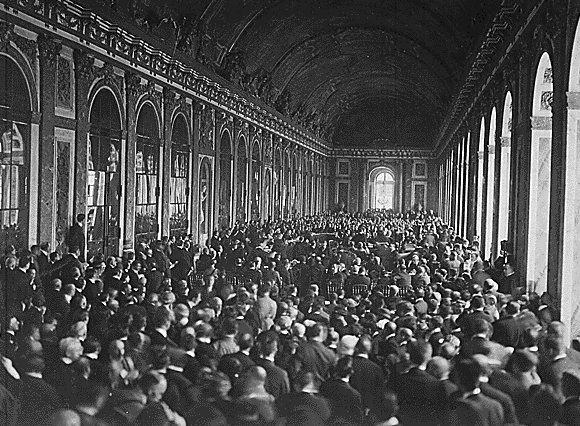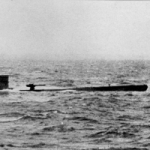Following the armistice in November, 1918, that ended World War I, the victorious powers – England, France, America, Italy, and Japan – met in Paris beginning in January, 1919, to determine the fate of the losers. The Treaty of Versailles, signed in June, saddled Germany with crippling reparations, loss of territory, and stifling limitations on its military forces.
One of the treaty’s more contested negotiations involved the fate of submarines. The U-boat tactic of unrestricted warfare against merchant shipping led some delegates to call for a ban on all submarines as weapons of war. This drastic step was eventually deemed unnecessary because future submarine tactics could be limited through restrictive naval treaties.
The issue was academic for Germany, which was prohibited from having any submarines by the Versailles Treaty. It also required Germany to surrender all its U-boats, including those under construction, thus giving the allied navies a valuable insight into German submarine technology.
In subsequent years, the treaty’s harsh conditions created sympathy within some allied nations for the hardships it imposed on the German people, particularly as the Great Depression struck Europe in the early 1930s. Consequently, many turned a blind eye as Germany began to build up its military forces. Beginning in 1933, under the newly elected Nazi regime, Germany openly began building a few new U-boats in violation of the treaty, launching the first of these new boats in April, 1935. They were nearly identical to one of the most successful U-boat designs from World War I, a stark example of how 15 years of prohibited submarine operations had stunted German U-boat design and technology.
Unwilling to challenge Germany over its violation of the Versailles Treaty’s restrictions, England entered into a new Anglo-German Pact in 1935, in which Germany agreed to limit the size of its navy to 35 percent of the overall size of the Royal Navy fleet.
To address any lingering concerns about unrestricted warfare tactics by submarines, England, Germany and 33 other nations signed the London Submarine Protocol of 1936. The protocol affirmed earlier restrictions that a submarine could not attack an unarmed, unescorted merchant ship without first giving warning of its intent. This required a submarine to surface and put a boarding party on the merchant ship to inspect its cargo for contraband. If any such cargo was found that could aid an enemy’s war effort, the ship could be sunk, but not before its crew was removed to a place of safety.
The British may have believed they had capped German rearmament and contained the most menacing of U-boat tactics, but a reckoning awaited them and the world three years hence. The submarine was soon to play an expanded role in naval warfare, as we will see in our next blog.






